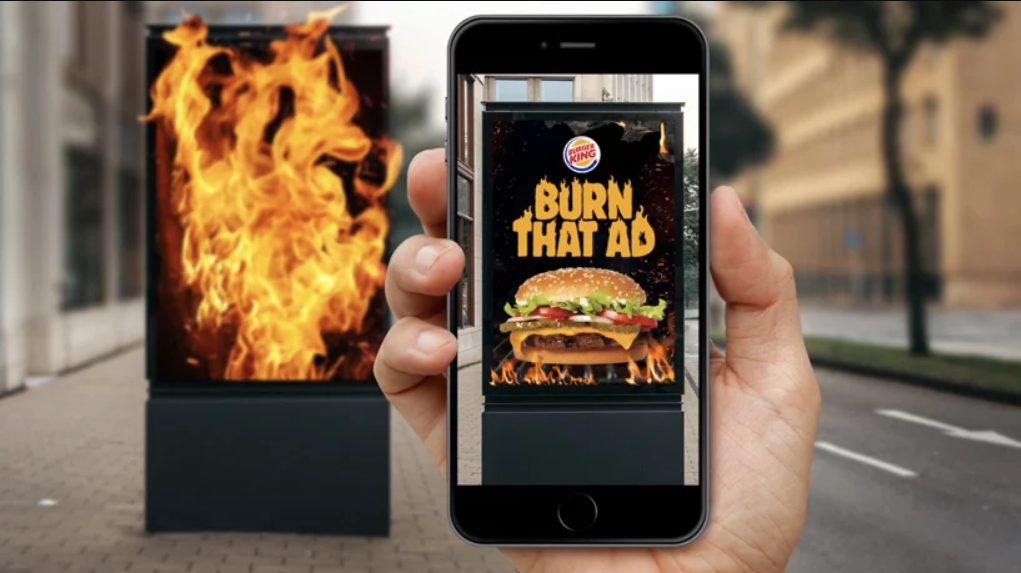Immersive storytelling could be the future of brand marketing.
Social media platforms are optimized for every pixel and millisecond of content. As we approach the end of 2019 and look back at the most successful advertisements and marketing campaigns of the year, not one of them has involved the use of VR or AR technology.
Advertising metrics, like the platforms that use them, have been carefully quantified and qualified for user experience, impressive statistics, and micro-analysis. Companies that use AR and VR commercial content like Ikea, Disney, and Warner Bros are using this medium for advertising performance.

Studies on the psychology of VR and AR have proven beyond doubt that immersive technology leads to the most effective and impressionable form of content. It increases the ability of a viewer to recount key facts, enables them to engage with content for longer periods of time, and has a more significant impact on the hearts and minds of the user than 2D video. At the Digital Entertainment World Expo this year, Tony Parisi, Head of AR/VR Ad Innovation at Unity, listed the following formats from most to least effective across mediums:
- Live event content activation (as most effective)
- VR/MR experiences
- AR apps
- AR ad
- Mobile video
While there are many doomsday-like reads out there for VR and AR—their capabilities as advertising tools and their effect on consumers—it’s time to re-think advertising with this new medium. How can we create advertising as experiences that enhance our lives rather than interrupt it? How can we make content development a race to the top?
With a saturated video market, it’s been fascinating to watch Netflix and its contenders regurgitate plots, actors and old content while at the same time spewing out original shows and series. Today’s audience has the option to multitask. They can watch TV, scroll on a phone or tablet, or even stream what a friend is watching in real-time. With VR and AR, the same rules don’t necessarily apply—at least not yet. It’s one person for the most part and content is transfixing. It’s a focal point instead of background noise or a time-ticker; t’s significant, interesting, and new.
One of the primary challenges of VR and AR advertising is showing potential investors that it actually works. In the last two years, and especially in 2019, the perception has changed as VR and AR analysis has widely entered the global market after a round of educating B2B consumers. And it’s not just the traditional quantifiers of 2D advertising that these agencies offer. Eye-tracking, camera access, interactive content, facial expression capture, and emotive response are valuable new measurements that can all be garnered using VR and AR. However, while results and insights are great rewards to be had from VR and AR, this new technology also introduces new concerns around privacy.
In addition to leading the way for a new generation of advertising that improves the lives of digital consumers, VR and AR content creators, advertisers, distributors, and software builders must also take the lead to establish effective privacy standards. How long should this information be stored? How much detail is captured and who can access this? Can data be bought and sold if reduced to simple words and numbers as is the norm?
The groundbreaking technology introduced to us in 2019 is only a small glimpse into a much larger future. As spatial web with 5G brings the metaverse and digital content into the real world with life-like 3D models, those who offer experiences to consumers now will find that this virtual impression makes an augmented impact. Today, VR is timeless.
As high-profile companies continue to adopt immersive technology in their promotional campaigns and advertisements, who knows what kind of shifts we will begin to see. Will Nike suddenly be competing with Netflix? Will physical space become digital playgrounds as the next Hollywood blockbuster builds out mini-portals into shop windows? In 2020, let’s redefine and rethink advertising for virtual and augmented reality. Boxing week sales might soon be a boxing week showcase at home and in stores.
Attention is a resource, and we only have so much of it. Thank you for reading.
The post Redefining Commercial Experiences In 2020 For VR & AR Consumers appeared first on VRScout.
from VRScout https://ift.tt/2MP2lNI
via IFTTT
No comments:
Post a Comment